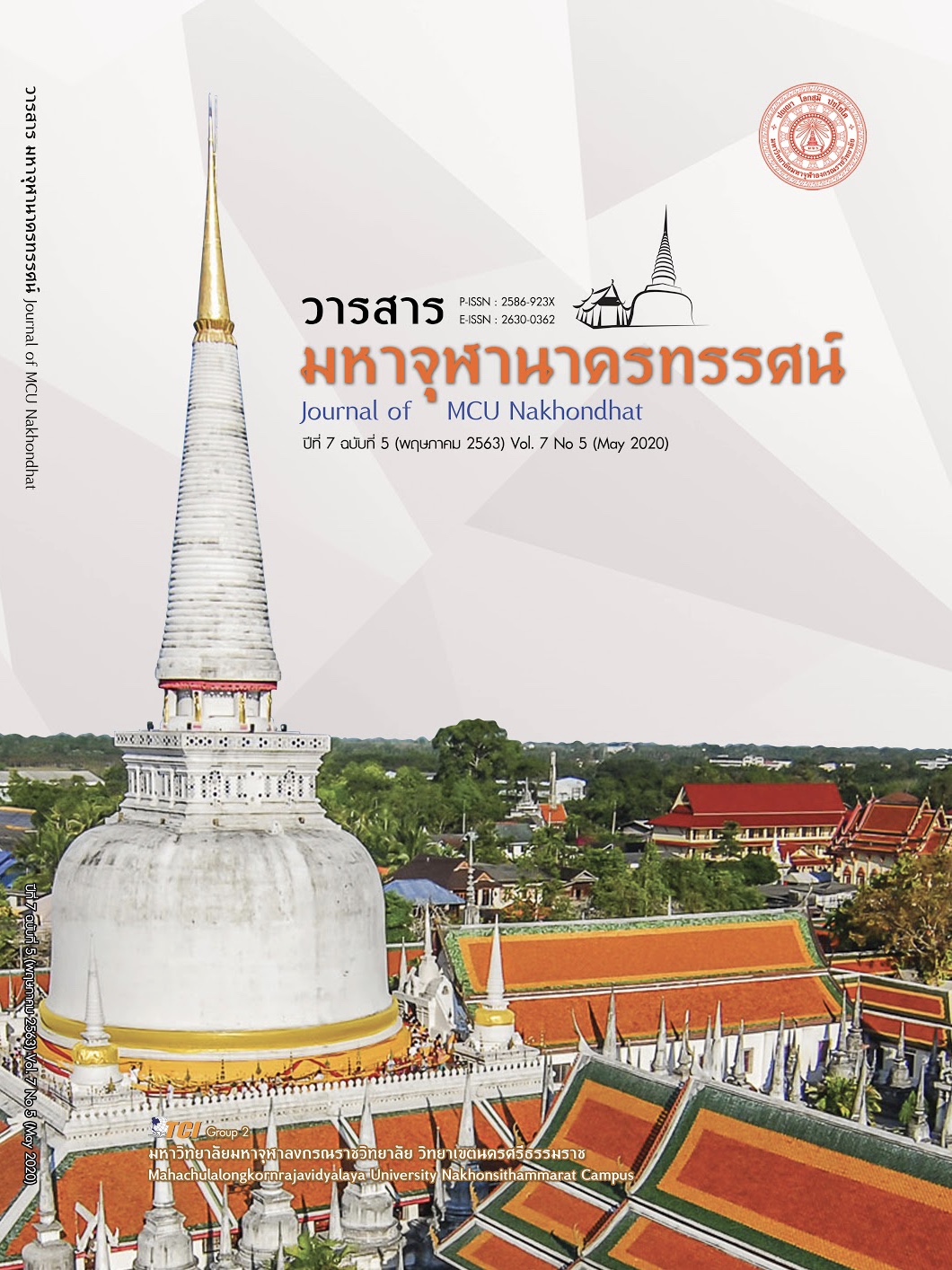DEVELOPING COLLABORATIVE PROBLEM SOLVING IN PHYSICS OF MATHAYOMSUKSA 5 STUDENTS BY USING PROBLEM – BASED LEARNING
Main Article Content
Abstract
This research is an action research. The objective is to develop the collaborative problem solving in physics of mathayomsuksa 5 students to pass the middle level criteria of PISA 2015's collaborative problem solving assessment framework, by using problem–based learning. The targets are 6 students which were purposive sampling. The instruments used in this research consist of 1) 9 lesson plans using problem – based learning on the topic of sound, take 12 hours, 2) observation form in students’ collaborative problem solving, and 3) assessment forms in students’ collaborative problem solving. It is characterized by a situation related to sound in physics and contains 12 questions, according to PISA 2015's collaborative problem solving assessment framework. The process of this research followed the concept of Kemmis & McTaggart’s action research, include 3 loops. There are 4 steps in the cycle; planning, action, observation, and reflection. Observation form in students’ collaborative problem solving is used While students were learning. And assessment forms in students’ collaborative problem solving are used after each cycle. The statistics using for data analysis are mean and percentage.
In the research, it was found that: 5 students could reach the medium level of collaborative problem solving. Moreover, there is a student could reach the high level of collaborative problem solving. It showed that learning by using problem – based learning can develop the collaborative problem solving of students.
Article Details
References
โครงการ PISA ประเทศไทย. (2561). การแก้ปัญหาแบบร่วมมือ: PISA วัดอย่างไร. Focus ประเด็นจาก PISA, 3(25), 1-4.
จรูญพงษ์ ชลสินธุ์ และคณะ. (2561). การวิจัยปฏิบัติการเพื่อพัฒนาการจัดการเรียนรู้ตามแนวสะเต็มศึกษาที่เป็นกระบวนการออกแบบเชิงวิศวกรรมที่ส่งเสริมสมรรถนะการแก้ปัญหาแบบร่วมมือ เรื่อง ปริมาณสารสัมพันธ์. วารสารศึกษาศาสตร์ มหาวิทยาลัยนเรศวร, 20(2), 32-46.
ทิศนา แขมมณี. (2561). ศาสตร์การสอน องค์ความรู้เพื่อการจัดกระบวนการเรียนรู้ที่มีประสิทธิภาพ. กรุงเทพมหานคร: โรงพิมพ์แห่งจุฬางกรณ์มหาวิทยาลัย.
พจงจิตร นาบุญมี และคณะ. (2562). การจัดการเรียนรู้โดยใช้ปัญหาเป็นฐานเพื่อพัฒนาสมรรถนะการแก้ปัญหาแบบร่วมมือ เรื่องการเคลื่อนที่แบบหมุนของนักเรียนชั้นมัธยมศึกษาปีที่ 4. วารสารศึกษาศาสตร์ มหาวิทยาลัยมหาสารคาม, 13(2), 193-205.
สถาบันส่งเสริมการสอนวิทยาศาสตร์และเทคโนโลยี (สสวท). (2560). กรอบโครงสร้างการประเมินผลนักเรียนโครงการ PISA 2015. กรุงเทพมหานคร: สถาบันส่งเสริมการสอนวิทยาศาสตร์และเทคโนโลยี (สสวท).
สำนักงานเลขาธิการสภาการศึกษา. (2550). แนวทางการจัดการเรียนรู้ที่เน้นผู้เรียนเป็นสำคัญ การเรียนรู้แบบใช้ปัญหาเป็นฐาน. กรุงเทพมหานคร: ชุมนุมการเกษตรแห่งประเทศไทย.
สุคนธ์ สินธพานนท์. (2558). การจัดการเรียนรู้ของครูยุคใหม่เพื่อพัฒนาทักษะผู้เรียนในศตวรรษที่ 21. กรุงเทพมหานคร: ห้างหุ้นส่วนจำกัด 9119 เทคนิคพริ้นติ้ง.
สุจินต์ วิศวธีรานนท์. (2547). ประมวลบทความทางการศึกษา การพัฒนาครูและบุคลากรทางการศึกษาในทศวรรษหน้า. นนทบุรี: โรงพิมพ์มหาวิทยาลัยสุโขทัยธรรมาธิราช.
Fadel, C. & Trilling, B. (2009). 21st Century Skills. San Francisco: Josseypass.
Gallagher , S. A. (1997). Problem - Based Learning: Where did it come From, What Does it Do, and Where is it Going? journal for the education of the gifted, 20(4), 332-358.
Krejeie, R.V. & Morgan, D.W. (1970). Determining sample size for research activities. Educational and Psychological Measurement, 30(3), 607-610.
OECD. (2013). PISA 2015 draft collaborative problem - solving framework. Paris: OECD.


